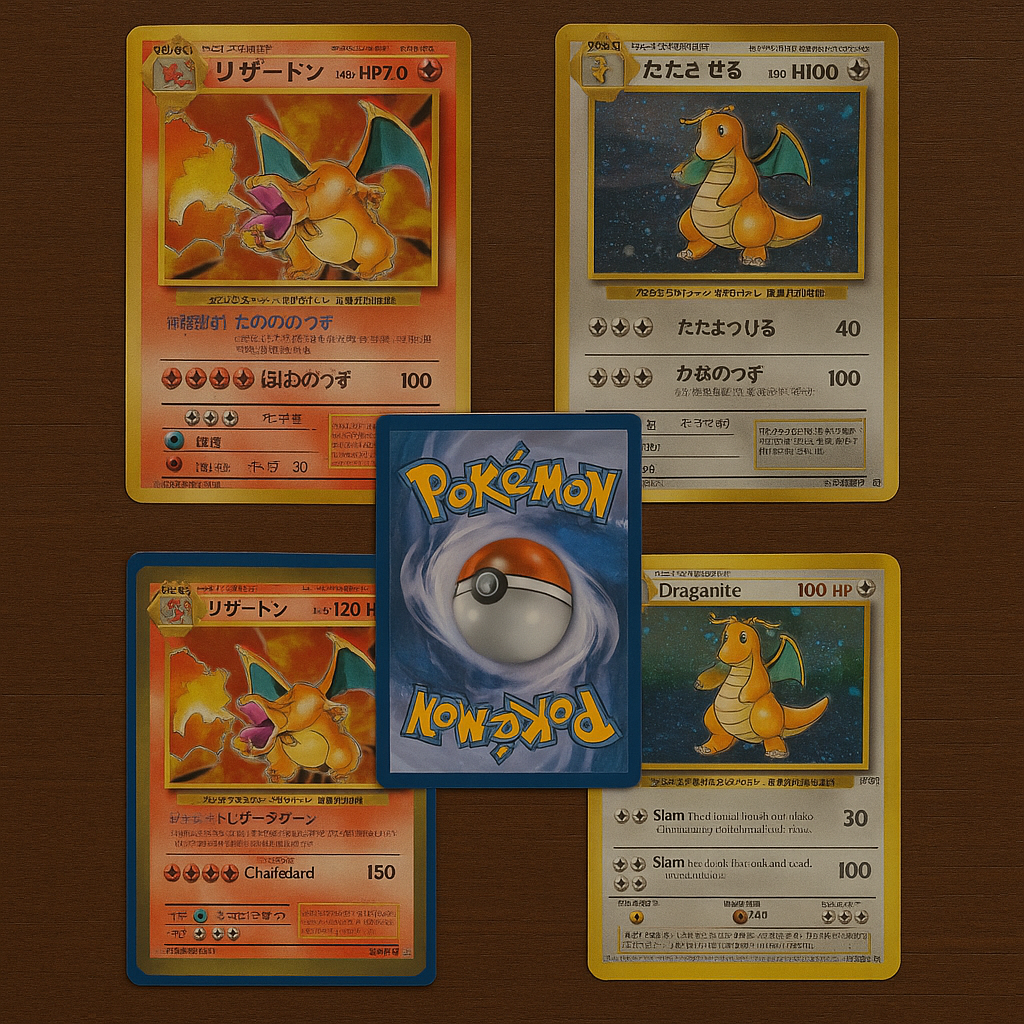
Japanese vs. English Pokémon Cards: What’s the Difference?
Share
If you're a Pokémon card collector or just getting started, you've probably noticed that some cards look a little different depending on where they're from. English and Japanese Pokémon cards are both official and highly collectible, but there are key differences between them that can influence your buying decisions, collection strategy, and overall appreciation for the hobby.
In this in-depth post, we’ll explore the visual, structural, and market differences between English and Japanese Pokémon cards to help you make informed choices and build a diverse collection.
1. Print Quality & Card Stock
One of the most immediate and noticeable differences between Japanese and English cards is the print quality.
- Japanese cards are known for their superior printing, color richness, and smoother finishes. The cardstock tends to feel firmer and more premium in hand.
- English cards, printed by different companies like The Pokémon Company International (rather than in-house in Japan), sometimes show more variability in centering and saturation.
If you appreciate crisp artwork and a clean finish, Japanese cards may win your heart.
2. Release Schedule Differences
Japanese sets typically release earlier than their English counterparts. A set released in Japan may take several months to appear in English, often under a different name or configuration.
- Example: The Japanese set "Shiny Treasure EX" may be adapted into multiple smaller English sets.
- Benefit: Buying Japanese products lets collectors get early access to new cards, making it a favorite route for trend followers and content creators.
3. Artwork and Card Layout
While the general card layout remains consistent globally, artwork styles and details may differ slightly:
- Japanese cards may feature alternate artworks or unique promo designs not found in English releases.
- Text size and formatting (especially for energy symbols and attacks) can differ, with Japanese cards having a cleaner, often more compact design.
- The positioning of rarity symbols, set numbers, and copyright lines may vary as well.
4. Card Back Design
The back of a Pokémon card is one of the most defining features. There’s a clear difference:
- English card backs feature a more colorful, saturated blue design.
- Japanese card backs are typically darker and slightly more matte in appearance.
If you mix both versions in a binder, you’ll spot the contrast immediately.
5. Rarity and Set Symbol Differences
- English cards often include set symbols and detailed rarity icons (star, diamond, circle).
- Japanese cards, especially older ones, may lack set symbols altogether or use a different visual style to denote rarity.
Also, Secret Rare numbering in Japanese cards can sometimes extend differently than the English releases, confusing new collectors at first glance.
6. Price & Availability
Due to differences in market size and import logistics, prices can vary:
- Japanese cards are often cheaper per booster pack but may include fewer cards per pack (typically 5).
- Some rare Japanese promos or exclusives can command high prices due to limited print runs or region-locked releases.
- English cards, while easier to find in Western countries, may carry a premium when demand spikes (e.g., during special events or anniversaries).
7. Tournament Play and Legality
If you plan to play in official tournaments:
- Only English cards (or other officially translated versions for the region) are legal in official English-speaking tournaments.
- Japanese cards are generally not allowed unless both players agree in a casual format.
Collectors who want to play competitively should factor this into their purchases.
8. Promo Cards and Exclusives
Japan has a rich history of exclusive promo cards tied to special events, store launches, or even magazine inserts.
Examples include:
- The famous Illustrator Pikachu
- Cards given out during Pokémon Center Japan openings
- Magazine-only promos from CoroCoro
These exclusives often never see an English release and can become invaluable collector items.
9. Language and Cultural Appeal
Some collectors prefer Japanese cards for their originality and authenticity. Others prefer English for readability and easier gameplay.
- Japanese text adds a mystique and sense of connection to the franchise’s origins.
- English cards are better for teaching younger collectors and playing the game without a translation app.
There’s no right or wrong—just personal preference.
10. Final Thoughts: Should You Collect Both?
Absolutely. Collecting both English and Japanese Pokémon cards allows you to enjoy the best of both worlds. You get early access to new designs, enjoy diverse artwork, and expand your global collection.
At Pokedans Emporium, we proudly offer a wide selection of both English and Japanese cards—from booster packs to rare promos. Whether you're a seasoned collector or just getting started, understanding these differences can help you make better buying decisions and deepen your love for the Pokémon TCG.
Start exploring today and take your collection to the next level!
